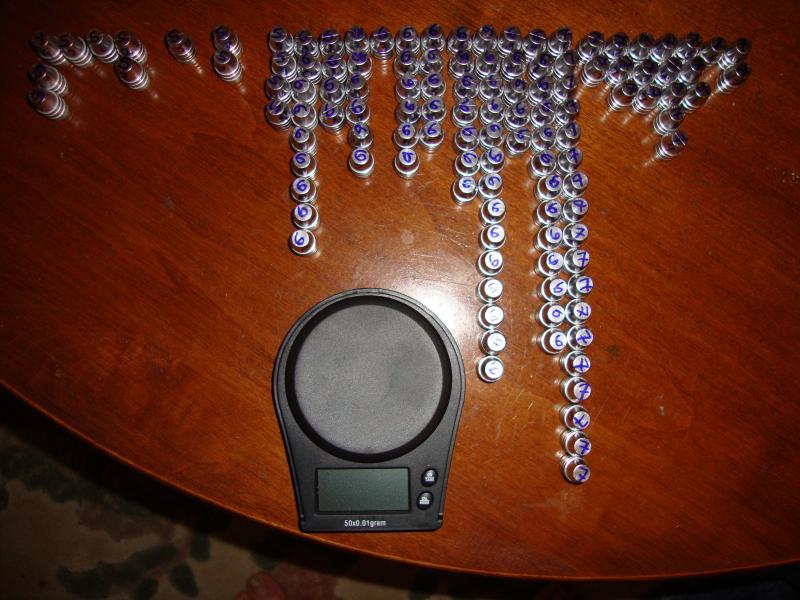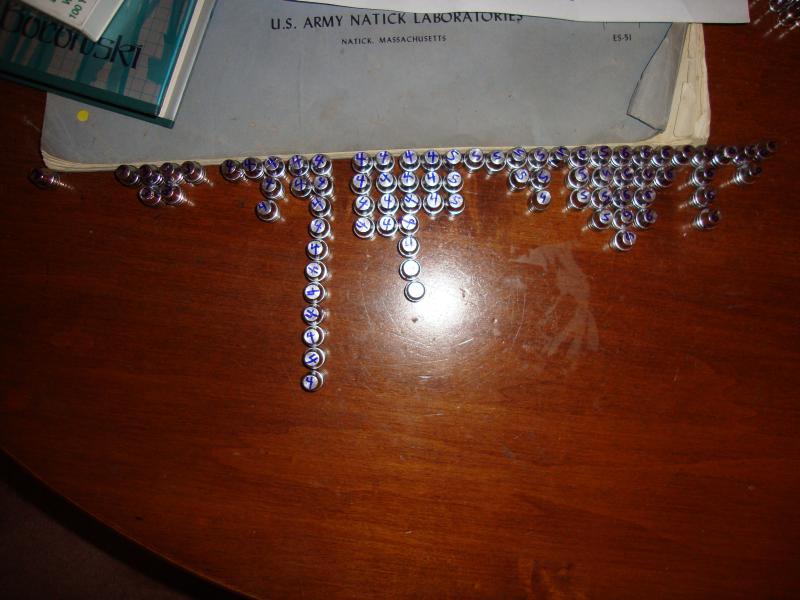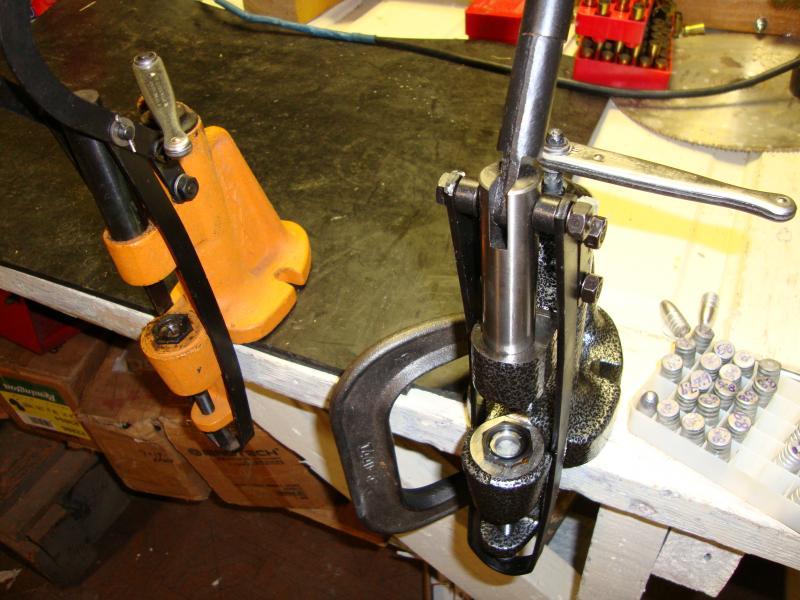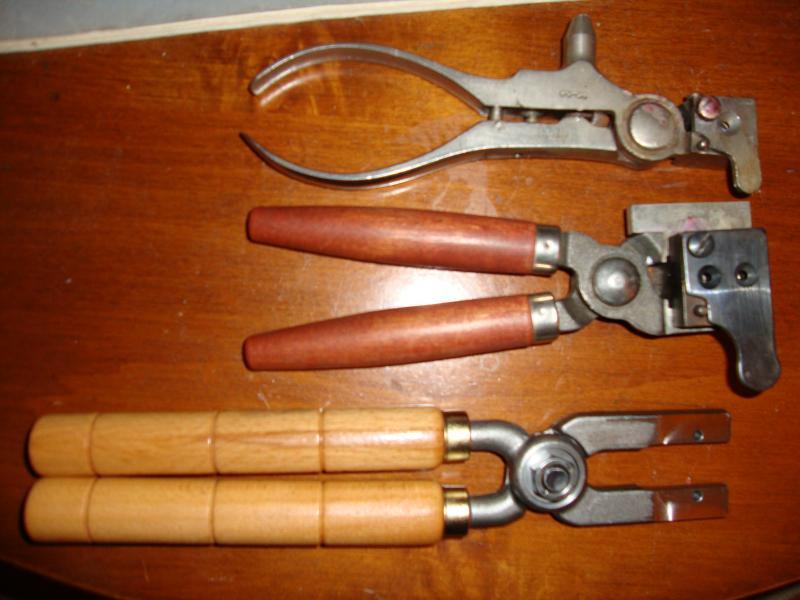-
Advisory Panel



Originally Posted by
villiers

Can now get most rounds into the standard 10 inch
German
paper target at 300 metres and even (sometimes) some quite good groups. Think that might be coming up to my limitations, though the Werder could well be better.
Patrick, I don't see (yet!) that you have any problem with the Werder. In fact, if you can get the shots inside 10" at 300 meters, that is very, very good with open sights and the short sight radius. The standard ISSF 300 meter target, as used by the BDMP and others, has a 10cm "10" with the rings at 5cm intervals, so all shots within 10" would translate as all shots well within the "8" ring. Just what is the problem - that shooting seems good to me!
-
The Following 2 Members Say Thank You to Patrick Chadwick For This Useful Post:
-
04-30-2013 04:59 PM
# ADS
Friends and Sponsors

-
Managed to cast bullets with the new .43 Spanish bullet mould today. 42 bullets, of which 40 were within 1 grain of 369.0 grains as cast. Never had a mould release bullets so easily!
Another first: Managed to get burned in a 1/2" round spot (2nd degree) just above the collarbone. Not quite sure what happened, except when the flux lit off it made me jump a bit- whilst stirring the pot... Not too bothersome so far.
-
Thank You to jmoore For This Useful Post:
-
Advisory Panel



Originally Posted by
jmoore

except when the flux lit off it made me jump a bit- whilst stirring the pot...
Another argument against "fluxing"  But apart from that, you seem to have got the casting method perfect. I have never been able to achieve such a close tolerance.
But apart from that, you seem to have got the casting method perfect. I have never been able to achieve such a close tolerance.
-
-
Oddly, even though the weights are close and near advertised weight, some small base voids were found. Tiny, but there.
The bullet finish displayed some oxide and dirt inclusions, hence the fluxing. It seems to help, but only if it's mixed well during the process. Usually sawdust works for me, but the wax flux seems to clean just a bit better. Cleaning needed probably due to all the red clay on the linotype. It was found behind an old print shop years back. I think much of the fluxing effect is due to the reducing atmosphere created, but there's more at work when the pot is stirred and the walls scraped. Have read various theories, none mention the reducing (versus oxidizing) factor, and generally don't answer for sure why it helps. You probably use nicer raw materials than I, so it's not as important.
ETA: On a completely different subject, there's an 1891 Argentine Mauser rifle that needs some range time. But I'm contemplating leaving it alone until a bullet mould can be obtained to shoot 200gr GC bullets, rather than going out and fouling the bore with 174gr jacketed RN soft points. Super bore, with not a hint of fouling currently. So, patience or immediate gratification? Knowing that the cast bulleted route is coming at some point...
Mauser rifle that needs some range time. But I'm contemplating leaving it alone until a bullet mould can be obtained to shoot 200gr GC bullets, rather than going out and fouling the bore with 174gr jacketed RN soft points. Super bore, with not a hint of fouling currently. So, patience or immediate gratification? Knowing that the cast bulleted route is coming at some point...
Last edited by jmoore; 05-01-2013 at 03:23 AM.
-
-
Yee hah! Bullet mould handles "in stock" and ordered (2 pair). Shipping delay is now reduced from ~4 weeks to two days as well. The repaired handles will be reserved for
The current drama is that the Lyman lube and size press which is charged with the good black powder SPG lube is not to be found...Probably in a friend's gear buried in one the boxes from when his store closed. Remotely possible it got sold, but it seems unlikely as I had a set of H&I dies installed for another project...maybe...
Still resisting the temptation to load the 7,65 Mauser cases with jacketed bullets.
-
-
Advisory Panel



Originally Posted by
jmoore

ETA: On a completely different subject, there's an 1891
Argentine
Mauser rifle that needs some range time. But I'm contemplating leaving it alone until a bullet mould can be obtained to shoot 200gr GC bullets, rather than going out and fouling the bore with 174gr jacketed RN soft points.
Have you tried the Hornady #3130 - the long-nose bullets with a good cylindrical section and a flat base. That is what shoots best in my 1891 Argentine.
-
-

Originally Posted by
Patrick Chadwick

Have you tried the Hornady #3130 - the long-nose bullets with a good cylindrical section and a flat base. That is what shoots best in my 1891
Argentine
.
Have two boxes just for said purpose. But the notion of making this a dedicated cast bullet rifle is quite tempting. It's free of jacket fouling now. Have waited years and years for one of these rifles, a little more waiting doesn't seem all that big a deal.
If there were a good jacketed bullet that duplicated the original, then it might be different. Sort of like Krags, it just seems wrong to shoot 180gr bullets out of those as well, but those at least have some good .30 caliber 220 grain bullets available. About the only rifle type that gets "non-standard" weight bullets is the Japanese Type 99. Mostly because they uniformly do better with the 150gr bullets for some reason. That and I've never even owned more than one or two Japaanese military 7,7 rounds!
Type 99. Mostly because they uniformly do better with the 150gr bullets for some reason. That and I've never even owned more than one or two Japaanese military 7,7 rounds!
BTW, Still can't find that lubri-sizer...
-
-

Originally Posted by
jmoore

Still can't find that lubri-sizer...
Couldn't find it, so bought a new one, although the interwebs seems to indicate it's unobtainium. Lyman 4500 at a gun shop known for it's high prices, but it was less than the current retail!
Did some range backstop mining last weekend. We picked up about 14 lbs in less than 15 minutes. Not a whole lot of jacketed bullets, but there must have been a swag of swaged lead bullets in the mess, as it took the addition of about 3 lbs of linotype to get good mould fill. Plus about 1/4 lb of 50/50 solder. That's stuff's running ~US$18 per lb. locally, though! Seems to cast light by about 2-3 grains on a 247gr bullet. Possibly because the metal is full of dirt!
-
-
A decent casting session with an old Lachmiller 250gr 2 cavity .433" SWCGC mould with metal known to cast OK:

Sorted by weight in 0.1gr increments
And what happens when fighting the metal during the range recovery test:

Oddly, some of the heavier bullets have poor fill-out, due to a higher lead content for both factors.
One of these days it would be nice to try a "store-bought" alloy of known composition!
-
-
Reading some of the new literature that comes with the Lyman 4500 lubrisizer, they recommend keeping only those bullets that weight within 1/2 grain of the average weight in a session. That seems rather difficult to achieve, especially with multi-cavity moulds. But the voids in bullets that are 1.5 and 2 grains light ARE frighteningly large! (Have photos in the camera, but forgot to bring it along today.)
The new sizer is fine, but the new handle isn't any sort of improvement as far as I can tell. The big .43 Spanish bullets don't cycle nearly as easily as the usual handgun bullets.

The new mould handles are big! And they are just for regular old 2-cavity mould blocks.

Patrick if you are still reading this mess, I noticed your heavy duty sprue plate. What's it's main purpose? A couple or three possibilities spring to mind.
Also, beginning to wonder if keeping the pot at 750°F is a little cool for good fill with softer bullets.
Last edited by jmoore; 05-20-2013 at 11:57 AM.
-

















 PM
PM








 But apart from that, you seem to have got the casting method perfect. I have never been able to achieve such a close tolerance.
But apart from that, you seem to have got the casting method perfect. I have never been able to achieve such a close tolerance.





